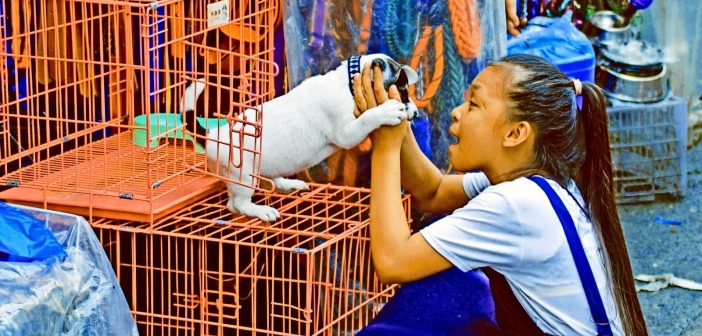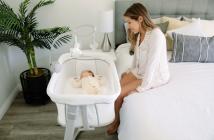Max Polyakov together with his wife Amelia adores animals. When they were without kids, they lived together with fifteen pets (4 dogs, 6 cats, 3 parrots and 2 hamsters). Then a baby girl was born. But one of the pets (dog Eos) was not prepared to accept a new member of the family and the atmosphere in the house changed. The dog became very jealous and aggressive towards the child, and it escalated to the point when Max Polyakov and his wife had an intention to give it up to other people who loved animals as well.
How to Prepare your Favourite Pet for the Arrival of a Baby
Max Polyakov gives advice that in order to prepare the home pet for the baby, you should ensure that it receives a basic training. During the training, process pets gain social skills. This enables them to behave correctly in any occurring situation. Throughout constant training routine, they learn how to deal with people as well as other animals. Basic social skills allow pets not to panic and not to be aggressive towards strangers.
What’s more, pets that have undergone general training have very little obedience problems in comparison to those that are not trained. Training always makes it possible to set limits on what is allowed and what is not.
In turn, the pet will also get to know what are the owner’s likes and dislikes. While you are interacting with your pet, respect and understanding will be created between the two and the bond will grow even stronger. It will be much easier to train the pet to accept a new family member.
General training maintains a happy life of the pet and its owner. Getting enrolled in different activities, like traveling together or visiting other people, makes the pet happier and more satisfied. This pet probably won’t have behavior issues, unlike
Pets Need to Be Prepared in Advance
Newborns normally bring drastic changes into the home surrounding. Max Polyakov suggests implementing new changes while the woman is pregnant or while planning. Animals are easily affected by a regime and bringing about the changes in advance lowers the risk of a pet to resent the child on its arrival.
Design a private place for an animal and allow it to get convenient there. Pick a place where the pet will not receive any disturbance. It may be something like a washing room, a dog crate or a tall shelf for a cat. Put a blanket, food bowl and a water dish in the pet place. With all these preparations, you will have designed a peaceful and safe room for the animal to back off whenever they are overly stimulated by the commotion in the house or troubled by baby cries.
Desensitize your animal to the rough treatment with kids. The pet should be tolerant of getting touched in areas where small hands may land. This involves places like face, tail, paw pads, mouth, ears and belly.
Start off with touching gently those spots of animals. Remember to touch them inside the mouth and ears, the lower area of paws and somewhere on the tail. If the animal resists and doesn’t allow it, let someone award the pet with treats or some chunks of food while you are carrying out this activity. Max Polyakov recommends performing this several times per day for the duration of 2 to 5 minutes. Train the animal while getting into other activities that it likes, for example, dining or playing. In this way, the touching that is initially perceived as unpleasant will be associated with fun things at the end of the day.




